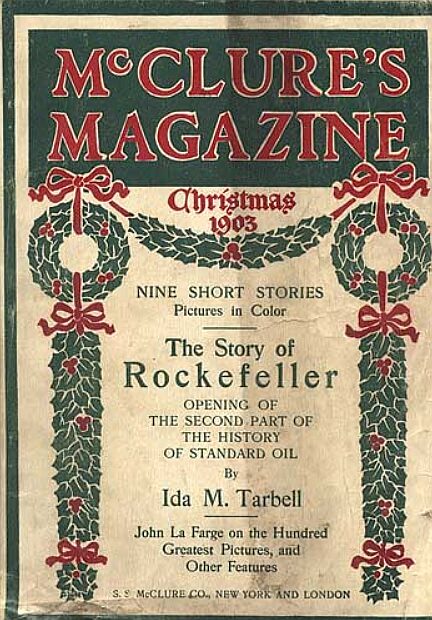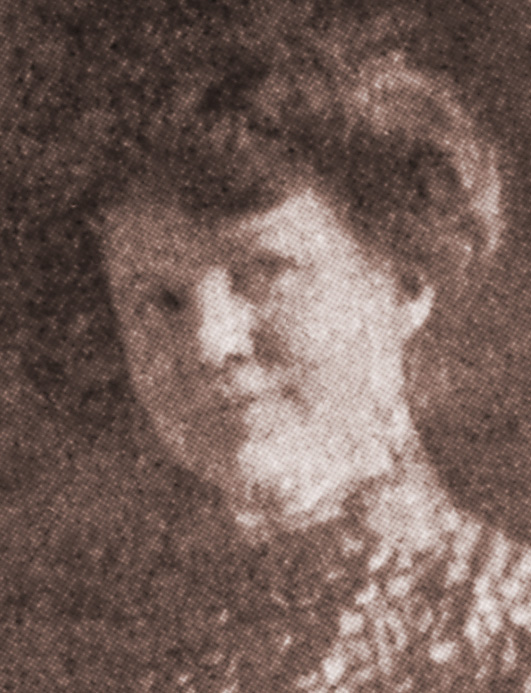|
James D. Graham
James D. Graham (1873-1951), was a Scottish-born American trade union leader and socialist politician. Graham is best remembered as the longtime leader of the Montana Federation of Labor (MFL) and the Socialist Party of Montana, state affiliate of the Socialist Party of America, during the first decades of the 20th century. He would serve as president of the MFL for two decades. Biography Early years James D. Graham was born February 2, 1873, in the coastal town of Greenock, Scotland, the son of a machinist named Michael Graham and his wife, the former Elizabeth Mann Denholm."James D. Graham," in John R. Steelman (ed.), ''Who's Who in Labor: The Authorized Biographies of the Men and Women Who Lead Labor in the United States and Canada and of Those Who Deal with Labor.'' New York: Dryden Press, 1946; pg. 138. The family would emigrate together to the United States of America in 1889, when James was 16.Bernard K. Johnpoll, "James D. Graham (1873-1951)," in Bernard K. Johnpol ... [...More Info...] [...Related Items...] OR: [Wikipedia] [Google] [Baidu] |
Greenock
Greenock (; sco, Greenock; gd, Grianaig, ) is a town and administrative centre in the Inverclyde council areas of Scotland, council area in Scotland, United Kingdom and a former burgh of barony, burgh within the Counties of Scotland, historic county of Renfrewshire (historic), Renfrewshire, located in the west central Lowlands of Scotland. It forms part of a contiguous urban area with Gourock to the west and Port Glasgow to the east. The United Kingdom Census 2011, 2011 UK Census showed that Greenock had a population of 44,248, a decrease from the 46,861 recorded in the United Kingdom Census 2001, 2001 UK Census. It lies on the south bank of the Clyde at the "Tail of the Bank" where the River Clyde deepens into the Firth of Clyde. History Name Place-name scholar William J. Watson wrote that "Greenock is well known in Gaelic as Grianáig, dative of grianág, a sunny knoll". The Scottish Gaelic place-name ''Grianaig'' is relatively common, with another (Greenock) near Calla ... [...More Info...] [...Related Items...] OR: [Wikipedia] [Google] [Baidu] |
Butte, Montana
Butte ( ) is a consolidated city-county and the county seat of Silver Bow County, Montana, United States. In 1977, the city and county governments consolidated to form the sole entity of Butte-Silver Bow. The city covers , and, according to the 2020 United States Census, 2020 census, has a population of 34,494, making it Montana's List of municipalities in Montana, fifth largest city. It is served by Bert Mooney Airport with airport code BTM. Established in 1864 as a mining camp in the northern Rocky Mountains on the Continental Divide of the Americas, Continental Divide, Butte experienced rapid development in the late-nineteenth century, and was Montana's first major industrial city. In its heyday between the late-nineteenth and early-twentieth centuries, it was one of the largest copper boomtowns in the American West. Employment opportunities in the mines attracted surges of Asian and European immigrants, particularly the Irish people, Irish; as of 2017, Butte has the largest ... [...More Info...] [...Related Items...] OR: [Wikipedia] [Google] [Baidu] |
Copper
Copper is a chemical element with the symbol Cu (from la, cuprum) and atomic number 29. It is a soft, malleable, and ductile metal with very high thermal and electrical conductivity. A freshly exposed surface of pure copper has a pinkish-orange color. Copper is used as a conductor of heat and electricity, as a building material, and as a constituent of various metal alloys, such as sterling silver used in jewelry, cupronickel used to make marine hardware and coins, and constantan used in strain gauges and thermocouples for temperature measurement. Copper is one of the few metals that can occur in nature in a directly usable metallic form ( native metals). This led to very early human use in several regions, from circa 8000 BC. Thousands of years later, it was the first metal to be smelted from sulfide ores, circa 5000 BC; the first metal to be cast into a shape in a mold, c. 4000 BC; and the first metal to be purposely alloyed with another metal, tin, to create ... [...More Info...] [...Related Items...] OR: [Wikipedia] [Google] [Baidu] |
Direct Democracy
Direct democracy or pure democracy is a form of democracy in which the Election#Electorate, electorate decides on policy initiatives without legislator, elected representatives as proxies. This differs from the majority of currently established democracies, which are representative democracy, representative democracies. The theory and practice of direct democracy and participation as its common characteristic was the core of work of many theorists, philosophers, politicians, and social critics, among whom the most important are Jean Jacques Rousseau, John Stuart Mill, and G. D. H. Cole, G.D.H. Cole. Overview In direct democracy, the people decide on policies without any intermediary or representative, whereas in a representative democracy people vote for representatives who then enact policy initiatives. Depending on the particular system in use, direct democracy might entail passing executive decisions, the use of sortition, making laws, directly electing or dismissing offici ... [...More Info...] [...Related Items...] OR: [Wikipedia] [Google] [Baidu] |
Women's Suffrage
Women's suffrage is the right of women to vote in elections. Beginning in the start of the 18th century, some people sought to change voting laws to allow women to vote. Liberal political parties would go on to grant women the right to vote, increasing the number of those parties' potential constituencies. National and international organizations formed to coordinate efforts towards women voting, especially the International Woman Suffrage Alliance (founded in 1904 in Berlin, Germany). Many instances occurred in recent centuries where women were selectively given, then stripped of, the right to vote. The first place in the world to award and maintain women's suffrage was New Jersey in 1776 (though in 1807 this was reverted so that only white men could vote). The first province to ''continuously'' allow women to vote was Pitcairn Islands in 1838, and the first sovereign nation was Norway in 1913, as the Kingdom of Hawai'i, which originally had universal suffrage in 1840, r ... [...More Info...] [...Related Items...] OR: [Wikipedia] [Google] [Baidu] |
Municipal Ownership
A state-owned enterprise (SOE) is a government entity which is established or nationalised by the ''national government'' or ''provincial government'' by an executive order or an act of legislation in order to earn profit for the government, control monopoly of the private sector entities, provide products and services to citizens at a lower price and for the achievement of overall financial goals & developmental objectives in a particular country. The national government or provincial government has majority ownership over these ''state owned enterprises''. These ''state owned enterprises'' are also known as public sector undertakings in some countries. Defining characteristics of SOEs are their distinct legal form and possession of financial goals & developmental objectives (e.g., a state railway company may aim to make transportation more accessible and earn profit for the government), SOEs are government entities established to pursue financial objectives and develop ... [...More Info...] [...Related Items...] OR: [Wikipedia] [Google] [Baidu] |
Progressive Era
The Progressive Era (late 1890s – late 1910s) was a period of widespread social activism and political reform across the United States focused on defeating corruption, monopoly, waste and inefficiency. The main themes ended during American involvement in World War I (1917–1918) while the waste and efficiency elements continued into the 1920s. Progressives sought to address the problems caused by rapid industrialization, urbanization, immigration, and political corruption; and by the enormous concentration of industrial ownership in monopolies. They were alarmed by the spread of slums, poverty, and what they perceived as the "exploitation" of labor. Multiple overlapping progressive movements fought perceived social, political and economic ills by advancing democracy, scientific methods, professionalism and efficiency; regulating businesses, protecting the natural environment, and improving working conditions in factories and living conditions of the urban poor. Sprea ... [...More Info...] [...Related Items...] OR: [Wikipedia] [Google] [Baidu] |
World War I
World War I (28 July 1914 11 November 1918), often abbreviated as WWI, was one of the deadliest global conflicts in history. Belligerents included much of Europe, the Russian Empire, the United States, and the Ottoman Empire, with fighting occurring throughout Europe, the Middle East, Africa, the Pacific, and parts of Asia. An estimated 9 million soldiers were killed in combat, plus another 23 million wounded, while 5 million civilians died as a result of military action, hunger, and disease. Millions more died in genocides within the Ottoman Empire and in the 1918 influenza pandemic, which was exacerbated by the movement of combatants during the war. Prior to 1914, the European great powers were divided between the Triple Entente (comprising France, Russia, and Britain) and the Triple Alliance (containing Germany, Austria-Hungary, and Italy). Tensions in the Balkans came to a head on 28 June 1914, following the assassination of Archduke Franz Ferdin ... [...More Info...] [...Related Items...] OR: [Wikipedia] [Google] [Baidu] |
1908 United States Presidential Election
The 1908 United States presidential election was the 31st quadrennial presidential election, held on Tuesday, November 3, 1908. Secretary of War and Republican Party nominee William Howard Taft defeated three-time Democratic nominee William Jennings Bryan. Popular incumbent President Theodore Roosevelt honored his promise not to seek a third term, and persuaded his close friend, Taft, to become his successor. With Roosevelt's support, Taft won the presidential nomination of the 1908 Republican National Convention on the first ballot. Having lost the 1904 election badly, the Democratic Party re-nominated Bryan, who had been defeated in 1896 and 1900 by Republican William McKinley. Despite his two previous defeats and the waning of the Free Silver issue, Bryan remained extremely popular among the more liberal and populist elements of the Democratic Party. Bryan ran a vigorous campaign against the nation's business elite, but the Democrat suffered the worst loss of his three pr ... [...More Info...] [...Related Items...] OR: [Wikipedia] [Google] [Baidu] |
Ida Crouch-Hazlett
Ida Crouch-Hazlett (born Ida Estelle Crouch, c. 1870 – 1941) was an American political activist prominent in the suffrage and socialist movements. Crouch-Hazlett is best remembered as a prominent orator and organizer for the Socialist Party of America during the first two decades of the 20th century. In 1902 Crouch-Hazlett became the first female candidate for U.S. Congress from Colorado when she ran for a seat in the House of Representatives. Biography Early years Ida Estelle Crouch was born c. 1870 in Chicago, Illinois, the daughter of two college-educated schoolteachers.Gary M. Fink (ed.), "Ida Crouch-Hazlett," ''Biographical Dictionary of American Labor.'' Revised edition. Westport, CT: Greenwood Press, 1984; pp. 167-1687. Crouch grew up in Monmouth, Illinois, where she attended elementary school, before enrolling in the Monticello Seminary of Godfrey, Illinois. She was an 1888 graduate of Illinois State Normal School (an institution that would later become Illinois Sta ... [...More Info...] [...Related Items...] OR: [Wikipedia] [Google] [Baidu] |
1900 United States Presidential Election
The 1900 United States presidential election was the 29th quadrennial presidential election, held on Tuesday, November 6, 1900. In a re-match of the 1896 race, incumbent Republican President William McKinley defeated his Democratic challenger, William Jennings Bryan. McKinley's victory made him the first president to win a consecutive re-election since Ulysses S. Grant had accomplished the same feat in 1872. Until 1956, this would be the last time in which an incumbent Republican president would win re-election after serving a full term in office. This election saw the fifth rematch in presidential history, something that would not occur again until 1956. This was also the first rematch to produce the same winner both times. McKinley and Bryan each faced little opposition within their own party. Although some Gold Democrats explored the possibility of a campaign by Admiral George Dewey, Bryan was easily re-nominated at the 1900 Democratic National Convention after Dewey withdr ... [...More Info...] [...Related Items...] OR: [Wikipedia] [Google] [Baidu] |

.jpg)





.jpg)